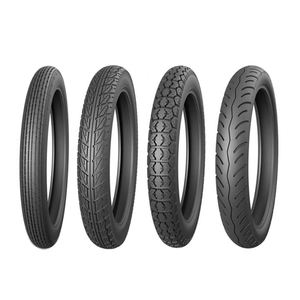The Facts About Motorcycle Boots Uncovered
Wiki Article
The Ultimate Guide To Motorcycle Boots
Table of ContentsThe Only Guide to Motorcycle BootsThe Ultimate Guide To Motorcycle BootsNot known Details About Motorcycle Boots The 8-Minute Rule for Motorcycle BootsThe 25-Second Trick For Motorcycle BootsLittle Known Facts About Motorcycle Boots.
The crucial components of modern-day motorbikes are presented listed below.; this has actually been used all via motorbike history however is now ending up being much more usual.It was extensively unpopular and normally considered a poor idea at the time. Today it is a made use of on some "thumpers" (single-cylinder four-strokes) that generally have dry-sump lubrication needing an external oil container. It has because gained some cachet in the modern-day customized bike world also since of the space cost savings it can afford and the referral to an earlier era.
Any type of storage space container for gas may be so called, the term is usually used to component of an engine system in which the gas is saved and moved (fuel pump) or launched (pressurized gas) right into an engine. A bike fork is the portion of a motorcycle that holds the front wheel and allows one to steer.
The Buzz on Motorcycle Boots
The 'fork' on a bike is composed of several components. The three-way trees (likewise known as yokes) hold the fork tubes (which contain the fork springtimes), and are secured to the neck of the frame by the guiding stem.
Motorcycles have primarily, however not exclusively, been generated with one to 4 cylinders, and developers have attempted basically every possible format. One of the most usual engine arrangements today are the solitary and twin, the V-twin, the opposed twin (or fighter), and the in-line triple and in-line four. A variety of others designs have actually reached automation, including the V-4, the level 6-cylinder, the flat 4-cylinder, the in-line 6-cylinder, and the Wankel engine.
The Definitive Guide for Motorcycle Boots
Chain-drive usages sprockets and a roller chain, which requires both lubrication and change for elongation (stretch) that happens via wear. The lubricant goes through being shaken off the fast-moving chain and results in gunk and dust accumulation. Chains do weaken, and extreme endure the front and back sprockets can be harmful.Traditional roller chain-drives endure the potential for vibration, as the effective span of action in a chain and gear mix frequently changes during the revolution ("chordal action"). If a drive sprocket turns at continuous RPM, then the chain (and the driven gear) needs to increase and decrease frequently. Most chain-driven motorcycles are fitted with a rubber bushed back wheel center to remove this resonance concern.
These chain oilers differ in refinement, yet all include dramatically to the life of the chain. The custom of lubing by submersing the chain in a tin of warm oil stopped in the early 1970s, when most chains had rubber "O'-rings. The original Suzuki RE5 of 1975 came with a back chain oiler, read this article yet the 1976 design had a closed chain, and its oiler was erased as "unnecessary".
Motorcycle Boots for Dummies
They are not as sturdy when subjected to high horsepower as a chain. You can not change the size and change last drive ratios as quickly as chains. And call for larger pulley-blocks contrasted to chain sprockets to get a reliable read this post here final drive ratio.Inside the bell real estate a bevel equipment on the shaft mates with an additional on the wheel mount. This plan is premium in terms of sound and cleanliness and is practically maintenance-free, with the exemption of periodic liquid adjustments.
The extra gear sets are a resource of power loss and included weight. Basically all high-performance auto racing bikes use chain-drive because they are the most mechanically efficient sending power to the back wheel.

Indicators on Motorcycle Boots You Need To Know
The most vital attribute of any tire is the call patch, the little location that is in contact with the road surface area while riding. There are tires developed for motorcycle, touring, sport and cruiser bikes. Dirt bike tires have knobbly, deep treads for maximum grasp on loosened dust, mud, or crushed rock; such tires have a tendency to be less secure and noisier on paved surface areas.Touring tires are generally made from a more difficult rubber substance for greater longevity, these may last much longer but have a tendency to provide less straight-out grip compared to sporting activities tires at optimal operating temperatures. Visiting tires generally supply more hold at reduced temperatures and can be much more matched to riding in cold or winter season conditions where a sporting activity tire might never reach its optimal operating temperature level.
These often tend to have stronger sidewalls as they are usually fitted to larger equipments. Motorsport or racing tires use the highest possible of degrees of hold. Due to the heats at which these tires usually operate, use outside a racing setting is risky, commonly these tires do not reach their optimum temperature which supplies find much less than optimum grasp.
The Single Strategy To Use For Motorcycle Boots

This can result in brake dive. Brakes can either be drum or disc based, with disc brakes being more common on large, modern-day or a lot more expensive motorbikes for their far remarkable stopping power, especially in wet conditions. There are numerous brake-performance-enhancing aftermarket parts available for most bikes, consisting of brake pads of differing substances and steel-braided brake lines.
Report this wiki page